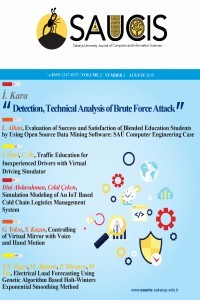
Sakarya University Journal of Computer and Information Sciences
Yazarlar: Abdullah Talha KABAKUŞ
Konular:Bilgisayar Bilimleri, Yapay Zeka
DOI:10.35377/saucis.03.03.776573
Anahtar Kelimeler:Deep learning,Deep neural networks,Feedforward neural networks,Convolutional neural networks,Recurrent neural networks
Özet: Deep learning, a subfield of machine learning, has proved its efficacy on a wide range of applications including but not limited to computer vision, text analysis and natural language processing, algorithm enhancement, computational biology, physical sciences, and medical diagnostics by producing results superior to the state-of-the-art approaches. When it comes to the implementation of deep neural networks, there exist various state-of-the-art platforms. Starting from this point of view, a qualitative and quantitative comparison of the state-of-the-art deep learning platforms is proposed in this study in order to shed light on which platform should be utilized for the implementations of deep neural networks. Two state-of-the-art deep learning platforms, namely, (i) Keras, and (ii) PyTorch were included in the comparison within this study. The deep learning platforms were quantitatively examined through the models based on three most popular deep neural networks, namely, (i) Feedforward Neural Network (FNN), (ii) Convolutional Neural Network (CNN), and (iii) Recurrent Neural Network (RNN). The models were evaluated on three evaluation metrics, namely, (i) training time, (ii) testing time, and (iii) prediction accuracy. According to the experimental results, while Keras provided the best performance for both FNNs and CNNs, PyTorch provided the best performance for RNNs expect for one evaluation metric, which was the testing time. This experimental study should help deep learning engineers and researchers to choose the most suitable platform for the implementations of their deep neural networks.
Dergi editörleri editör girişini kullanarak sisteme giriş yapabilirler. Editör girişi için tıklayınız.